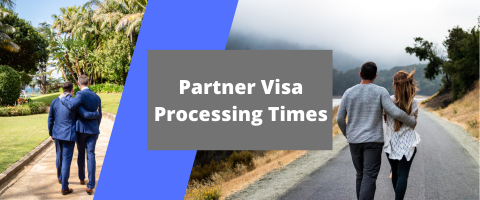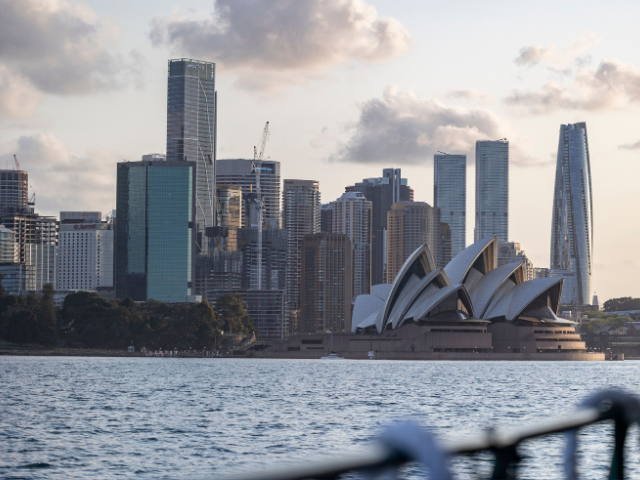In 2018, one quarter of all Australian marriages were between a local and foreign born person.
That’s 28,452 marriages in Australia and potential spouse visas. (Source: https://www.smh.com.au/lifestyle/life-and-relationships/home-is-where-the-heart-is-or-is-it-20191223-p53mgt.html)
Partner visa processing times have steadily increased over the past two years.
We have previously written about the processing times here: https://www.workvisalawyers.com.au/news/all/australia-partner-visa-processing-times-update-march-2017
The current processing times are such that for a Temporary Partner (subclass 820) visa (onshore) 22 to 29 months on the Home Affairs website (https://immi.homeaffairs.gov.au/visas/getting-a-visa/visa-listing/partner-onshore/temporary-820)
And for a Partner Provisional (subclass 309) visa (offshore) 17 to 20 months on the Home Affairs website (https://immi.homeaffairs.gov.au/visas/getting-a-visa/visa-listing/partner-offshore)
The Department is receiving more applications in a migration program year (same as the financial year, from 1 July to 30 June) than it will be able to process in that year, which is affecting your ability to get the visa granted.

Here’s a quick snapshot of the current statistics:
- Total number of applicants in backlog up from 190,000 to 245,000.
- 90% of 801 cases finalised up from 337 to 768 days.
- 309 annual lodgements down from 30,000 to 20,000, while 820 lodgements up from 31,000 to 38,000.
- 95,000 grants of 309/100/820/801 visas in FY 2018/19.
- Migration Program planning level for Partner Visas for 2019-2020 year is 39,799.
Sources:
- https://www.aph.gov.au/api/qon/downloadattachment?attachmentId=0fb9a239-ac92-479c-a736-206e1f4def6e
- https://immi.homeaffairs.gov.au/what-we-do/migration-program-planning-levels
If you are in a relationship with an Australian and wish to apply for a permanent partner visa.
There are two ways to apply for a Partner visa, onshore or offshore. There are differing processing times for whichever path you take. In this article we will cover:
Current Processing Times for onshore Partner visas
| Stream | 75 percent of applications processed | 90 percent of applications processed |
| 820 - Temporary Visa | 22 months | 29 months |
| 801 - Permanent Visa | 16 months | 24 months |
As of 22 January 2020.
Processing time for Partner (permanent) visa is from date of eligibility (2 years after the application is lodged) to finalization.
Current Processing Times for offshore Partner visas
| Stream | 75 percent of applications processed | 90 percent of applications processed |
| 309 - Provisional Visa | 17 months | 20 months |
| 100 - Permanent visa | -- months | -- months |
As of 22 January 2020.
Processing time for Partner (permanent) visa is from date of eligibility (2 years after the application is lodged) to finalization.
Partner visas can be lodged onshore or offshore
There are pros and cons to the onshore or the offshore partner visa. Depending on your circumstances, we can help you decide which one is the better option. The offshore processing time is slightly faster in processing.
If your application is lodged while you are in Australia, you will usually be issued a bridging visa to remain in Australia while it is processing.
Considerations you may want to take into account:
- whether you have a reason to stay in your country while the partner visa is processing. If you are not yet ready to leave your home for a new shared life in Australia you can take your time getting here while the partner visa is processing.
- Whether you have any children from the relationship whose best interests need to be considered before your own.
- Whether you have enough savings for the move or are able to find work in Australia given your own qualifications and work experience. A partner visa does not guarantee employment in Australia.
- Whether you and your spouse or de facto partner could survive a long distance relationship if the offshore partner visa was the only option. Distance can be the most challenging aspect of the entire partner visa process.
During the offshore processing period, you can still travel to Australia if you’re eligible to meet another visa requirement, such as visitor visa.
How to Improve Your Processing Times

1. Complete & Submit All Documents by Applicant and Sponsor
One of the most important steps you can take for speeding up your application is completing all of your documents and submitting them right away. This includes documents you are not required to turn in at the time of lodging your application.
Applicant Documents
Application documents you must provide include are:
- Identity Documents
- Documents about your relationship
- Documents about other relationships
- Character Documents
You need to supply all of the documents, even if you already supplied them for a Prospective Marriage visa (subclass 300) to prove the relationship is genuine.
Sponsor Documents
You can lodge your sponsorship form through your ImmiAccount or your spouse or de facto partners’ ImmiAccount after your partner has lodged their visa application. You will need your partner's Transaction Reference Number (TRN) or application ID.
Application documents the sponsor must provide include:
- Identity Documents
- Proof of citizenship
- Character Documents
2.Supply Police Clearance/Certificates
While you are not required to provide the following documents/police certificates at the time of application, you will need to provide them before a decision is made about your application. If you do not provide them, Home Affairs will request them.
Australian Police Certificate
If you have spent a total of 12 months or more in Australia, after turning 16 years, an Australian National Police Certificate or proof you have applied for a National Police Check is required. An email confirmation or receipt that you have applied to the National Police Check is acceptable.
Home Affairs will only accept Complete Disclosure National Police Certificates issued by the Australian Federal Police. They do not accept standard disclosure certificates or national police certificates issued by your state’s police.
Overseas Police Certificates
If, in the last 10 years after turning 16 years of age, you have spent a total of 12 months or more in any country, including your home country, you must provide a police certificate from that country.
3. Use a Registered Migration Agent/Seek Migration Advice
It may be obvious to some but most do not realize that hiring a Registered Migration Agent (RMA) is usually the fastest and cheapest path when applying for a visa.
Migration law is ever changing and every applicants' circumstances are different. This means that when you are applying for a visa it is very easy for an applicant to do the wrong thing, miss a step or act on poor/old information (usually received from the internet).
Registered Migration Agents are well versed in the many intricacies of the law, which increases your chances of approval the first time. While the Administrative Appeals Tribunal (AAT) can review a refused application, they do not review every refusal. Thus, it is better to be safe by getting your application accepted the first time, as you will have to pay for a review or a whole new application.
Registered Migration Agents will also make the process less stressful in many ways. RMA’s can simplify the process and make sure you understand every situation. Furthermore, RMA’s are eligible to deal with Home Affairs/The Department of Immigration and Border Protection on your behalf. This process can be very intimidating as what you say to the departments go on record and can influence the outcome of your application.
4. Compelling & Compassionate Circumstances
Compelling and compassionate circumstances (Schedule 3) is a special case scenario and is very uncommon. If you are applying for a partner or a child visa, your application might be prioritized if you can demonstrate compelling and compassionate circumstances. To do this, you will need to make a request for priority processing with the visa office where your application is being processed and provide evidence to support your claims.
Even if you are found to have a compelling and compassionate circumstance there is no guarantee that your application will be given a higher priority as other applicants might have equally or more compelling and compassionate circumstances.
“It is the nature of family migration that most applications have compelling and compassionate elements. Consequently, it is considered that the fairest way of processing visa applications subject to capping and queuing is in date order.” (Home Affairs).
Click here to find more information about Australian Partner Visa Processing Times
What NOT to do when applying for your Partner Visa Application
Showing your frustration
Continually contacting the department and harassing officers can contribute to a negative result. We understand this can be difficult but following the process is the best way to ensure you don’t run the risk of jeopardizing your application due to your own actions.
Lodging your application in rushed and incomplete manner
Sending information with the view that will be able to be added later could result in actually causing a PIC 2020 condition which is the provision of false documents and misleading information. Click here to read more about the PIC 4020 condition.
If you do receive a PIC 4020 penalty this bars you from making another application for 3years.
Be Inconsistent
It is important to be consistent with the situation and information you put forward to the Department of Home Affairs. For instance if you apply for a Skilled Migrant Visa and say that you are single then apply for a partner visa you could be charged with a PIC 4020 for supplying misleading information to the department.
We understand that going through the partner visa process can be a hard and lengthy journey.
It requires your patience and the support of your family and friends as well as support for each other.
The best way to ensure you have the best chance of a successful visa is to get professional migration advice and get it right the first time.
Watch our Partner Visa Information Video
About the Author
Christina Lien is a Lawyer and a registered Migration Agent specialising in Partner Visas.
Call us today to arrange an appointment to discuss your spouse or de facto partner visa pathway.
Sources:
- https://www.smh.com.au/lifestyle/life-and-relationships/home-is-where-the-heart-is-or-is-it-20191223-p53mgt.html?ref=rss&utm_medium=rss&utm_source=rss_feed
- https://www.aph.gov.au/api/qon/downloadattachment?attachmentId=0fb9a239-ac92-479c-a736-206e1f4def6e
- https://www.homeaffairs.gov.au/trav/brin/part
- https://www.homeaffairs.gov.au/trav/brin/fami/capping-and-queuing
- https://www.workvisalawyers.com.au/news/all/australia-partner-visa-processing-times-update-march-2017.html









